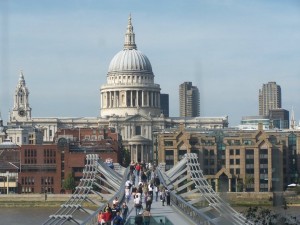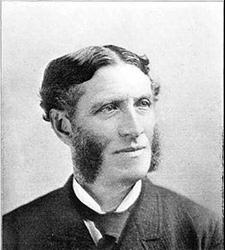After visiting several religious sites, including St. Paul’s Cathedral, Westminster Abbey, the Shri Swaminarayan Mandir, and the East London Mosque, I have noticed two prevailing influences on places of religious worship in London: government involvement and tourism. Given England’s history of combining church and state, and the level of tourism in London, it is no wonder that one finds these influences, to varying degrees, in places of religious worship around the city. What is debatable is what effect tourism and government have on religious life and the worship within each of these buildings. In my opinion, churches, temples, synagogues, mosques, and the like may receive some benefits from tourism and a close relationship of Church(capital c, intending to refer to institutions) and State. However, on the whole, the influence of the government and the need to attract tourists lead to some troublesome trends in London’s places of religious worship.
By declaring a national religion, a country will very likely run into one of two scenarios. Either a small central government, such as a monarch, will use the national religion as a way to increase power and authority, and will persecute anyone who does not agree with their religious views. One can simply observe the history of the monarchy as they walk through Westminster Abbey, and see that this happened in England with the persecution, and massacre, of Catholics and others. This scenario has a horrible effect on religion, not to mention the human rights issues. If a ruler can influence the Church, then the Church’s message will quickly become distorted. Even if the ruler moves far away from the central texts and traditions of whatever faith is the national religion, there is no room for dissent. Historically, this situation has played itself out repeatedly.
The second scenario that can result from a combining of Church and State is what, in my view, is playing out in present day London. In this scenario, because the Anglican Church is the official religion for a nation that is increasingly secular and religiously diverse, the Church has become, frankly, bland. As a result, no one (or at, least, the intention is no one) is offended by the existence of a national religion. This also distorts the message of the Church, as governmental control has seemingly caused the Church to concentrate more on pleasing the masses than adhering to texts and traditions that could cause controversy. This “blandness” starts a vicious circle, as everyone involved in the Church sees no reason to attend anymore because it is no different than the world around them. This, in my view, is why when you go into St. Paul’s Cathedral or Westminster Abbey you don’t feel like there is an active faith community existent within the building. However, when we visited places like the Mandir or the East London Mosque one felt a sense of vibrancy and activity because these institutions are not as attached to the government. The lay leader at the synagogue suggested that combining Church and State has its advantages and disadvantages. Certainly, government involvement in religion has allowed students to become more educated in different faiths(Although exactly what they are learning and should be learning opens another can of worms) and governmental intervention allows the church to be funded, but is it worth watering down the principals of a major religion?

Picture obtained from http://www.mandir.org/
Almost as prevalent as the influence of government is that of tourism. Even the Mandir had a small museum you had to pay to enter (unless, of course, you had a London’s Visitor’s Pass-a card that also provides discounts at the gifts shops next to the crypt in St. Paul’s). From the perspective of the religious institutions, an influx of tourists allows you to share your belief system, but it’s a fine line between an educational experience and a money-making venture. At what point, and I don’t have an answer, does opening one’s place of religious worship become more about the cool architecture and less about the faith people are observing within the building? I am not saying any of the places we visited crossed such a line, but I know I am not the only one disturbed by the presence of gift shops in churches.
I am interested in seeing if Norwich’s places of religious worship, and in particular Norwich’s churches, differ from that of London’s. I do think we have seen people honestly observing faith here in London and I enjoyed many of the visits we made to these institutions. I simply think that they all, to wildly varying degrees, feel the effects, mostly negative, of tourists and government control.




